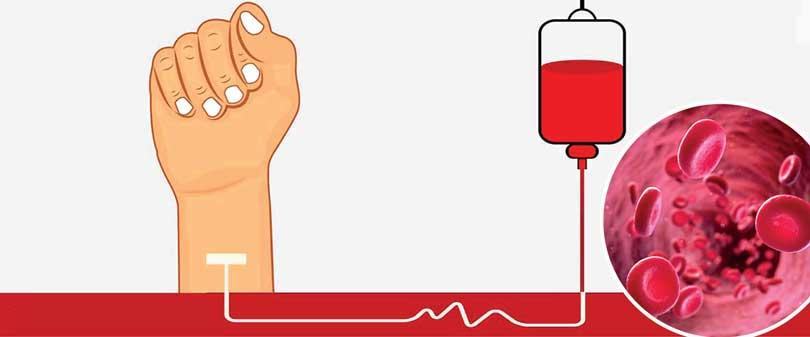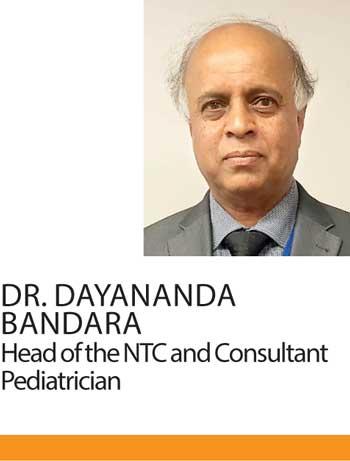Reply To:
Name - Reply Comment

 Blood is like fuel to all humans and animals. It is the fluid that regulates all the functions that occur within the body. Blood delivers all the necessary substances such as nutrients and oxygen to every cell and also transports the metabolic waste products away from the cell.
Blood is like fuel to all humans and animals. It is the fluid that regulates all the functions that occur within the body. Blood delivers all the necessary substances such as nutrients and oxygen to every cell and also transports the metabolic waste products away from the cell.
Blood mainly transports oxygen, which is required for the survival of living beings. The oxygen is transported through blood by combining with haemoglobin found in red blood cells. Haemoglobin is a protein that carries oxygen from the lungs to the tissues of the body. Therefore, it plays a critical role in the body and is its production is very important.
However, most people struggle with not being able to produce the required and usual amount of haemoglobin. The abnormal levels of haemoglobin, or the abnormal types of haemoglobin can result in serious disease. This condition in which the body makes an abnormal form or inadequate amount of haemoglobin is known as ‘thalassaemia’.
This blood disorder results in the excessive destruction of red blood cells leading to ‘anaemia’, which is a condition in which the body is deprived of its normal and healthy red blood cell level.
THALASSAEMIA RECORDS IN SRI LANKA
According to the information received from the National Thalassaemia Centre (NTC), thalassaemia has proven to be one of the most dangerous diseases that has become quite common in the society. Thalassaemia, being an inherited disease, has the ability to acquire new victims and spread rapidly by passing on the carrier gene to next generations.
It has been found that there are around 2600 thalassaemia patients and around 1000 of them visit the NTC. Most of the thalassaemia patients have been identified to be from Kurunegala.
These patients have recognized symptoms after 6 months. On previous records, there have been about 80 patients visiting the NTC annually. However, after awareness programmes conducted by the centre, the number has reduced.
Over 250,000 people have been tested for thalassaemia at the NTC so far and 26,000 disease carriers have been identified.
Doctor Dayananda Bandara, Head of the NTC and Consultant Pediatrician, spoke to the Health Capsule about thalassaemia to help spread awareness about the disorder and the need to avoid the chances of giving birth to new victims.
An inherited blood disorder
Doctor Dayananda explained that thalassaemia is an inherited blood disorder which is transmitted by carrier parents to their children.
He mentioned that there are 3 common types of thalassaemia in Sri Lanka. They are, thalassaemia major, thalassaemia trait and E thalassaemia. He also mentioned that there are sub types of similar yet minor thalassaemia present. However, the general public is educated on the above 3 common types.
Thalassaemia major is when the patient is a victim of the disease due to inheriting the thalassaemia gene from both parents. This patient lacks the ability to produce normal haemoglobin and adequate amount of haemoglobin. This genetic defect of thalassaemia results in anaemia and expansion of the bone marrow.
Thalassaemia trait is when the patient carries the genetic trait for thalassaemia but do not actually have the disorder. These patients will not experience health issues except mild anaemia due to the production of haemoglobin at a reduced rate. Patients with thalassaemia trait are known as the carriers.
E-thalassaemia results in mild to severe impacts.
CAUSES AND EFFECTS
Thalassaemia is caused due to the mutations that occur in the DNA of the cells that produce haemoglobin. These mutations that are associated with thalassaemia are passed down from the parents to their children. When both parents carry this gene, their child can fall prey to the fatal disease.
Dr Dayananda explained that the gene abnormality mainly affects the red blood cells and haemoglobin production. He stated that this may affect the patient’s normal Red Blood Cell life span. The normal life span of a red blood cell is 120 days or 3 months. However, due to the defective haemoglobin, it may reduce to 3 weeks or one month.
Since the body is not able to produce the necessary amount of haemoglobin, it leads to anaemia. Premature destruction of Red Blood Cells also leads to anaemia.
SYMPTOMS
The symptoms of thalassaemia can vary from mild to severe and life-threatening.
According to Dr Dayananda, the clinical features begin 3 months onward. Symptoms include pale colour of skin, less activeness, more prone to infections and retarded growth. Rapid heartbeat, fatigue and skeletal deformities can also occur.
Recognizing the symptoms will eventually lead to tests and diagnosis to confirm the presence of the blood disorder.
DIAGNOSING
Thalassaemia is diagnosed by conducting various blood tests.
If the patient has thalassaemia, the blood tests will reveal a low level of red blood cells, smaller red blood cells, pale coloured red blood cells and also red blood cells that vary in size and shape.
Red blood cells with an uneven distribution of haemoglobin will also be identified.
TREATMENT
 The main treatment for thalassaemia is blood transfusion.
The main treatment for thalassaemia is blood transfusion.
Dr Dayananda stressed the importance for thalassaemia patients to get blood transfusions done as a life habit in order to avoid the consequences. He stated that the disease requires lifelong treatment that should at least be done every third or fourth week regularly.
Blood transfusions help to replenish haemoglobin and Red Blood Cell levels in the body. Dr Dayananda said that haemoglobin contains an iron component. Therefore, regular blood transfusions cause an iron overload and the iron will deposit in the entire body of the patient including the brain, thyroid gland, heart, liver and pancreas. This causes problems such as growth reduction, hypothyroidism, heart failure, cirrhosis and diabetes.
These conditions are side effects of blood transfusions and to avoid such conditions, the excess iron should be removed from the body.
The removal of excess iron from the blood stream is a quite costly process. Dr Dayananda stated that blood transfusions are quite expensive as well. Also, the treatment is a lifelong process which is painful and time consuming. However, there is no alternative.
Dr Dayananda mentioned that each patient that receives treatment requires at least one million per year according to government cost.
Fortunately, the Sri Lankan government provides these facilities to the patients free of charge. This costs around 2.6 billion per year for the management, which is 5% of the annual health budget.
Another mode of treatment is the bone marrow transplantation. A transplant from a compatible donor is an effective treatment. However, this is quite expensive.
Dr Dayananda explained that the diet of a thalassaemia patient is the same as a normal person. However, the lifestyle of the patient is somewhat different. The lifestyle of a thalassaemia patient involves restriction of activity and monthly admission to hospitals. They should mostly spend their time getting blood transfusions. Also, due to the less amount of haemoglobin present, it causes fatigue and therefore inactiveness.
The National Thalassaemia Centre is the largest thalassaemia centre of this part of the world. According to Dr Dayananda, the centre conducts thalassaemia screening programmes for school children and university students to help educate them on this perilous disease. This helps to avoid future risks of more patients and carriers.
600 education programmes have been conducted in the North Western province along with free blood tests which had helped to identify about 26,000 carriers of thalassaemia.
Dr Dayananda stated that it is quite important to encourage thalassaemia carriers to marry non carriers so that the children would not become thalassaemia victims. In this way, a safe and thalassaemia free generation can be ensured.
The public should be educated about more such disorders and marriage styles in order to prevent future cases that are generally incompatible with life. It is important that we create awareness among the society to avoid the birth of thalassaemia patients and also prevent further deaths caused by thalassaemia.
Population screening, genetic counselling and prenatal diagnosis are ways to control spreading of thalassaemia. And also, providing hospitals with the necessary facilities and capital can help in a great way to treat patients.
All these taken into consideration, the society will be able to fight against thalassaemia and ensure safe and healthy new generations.